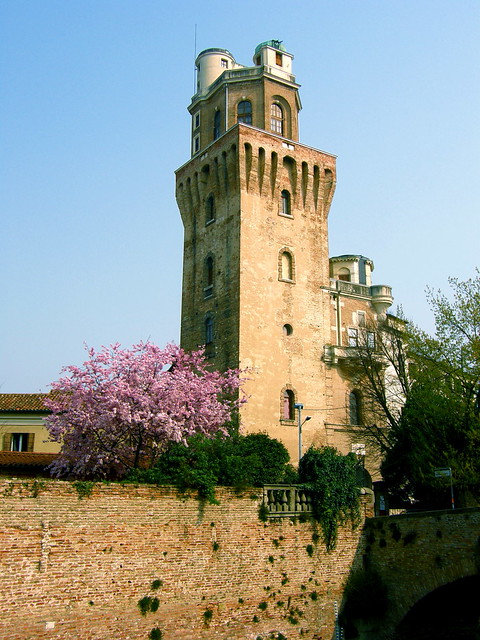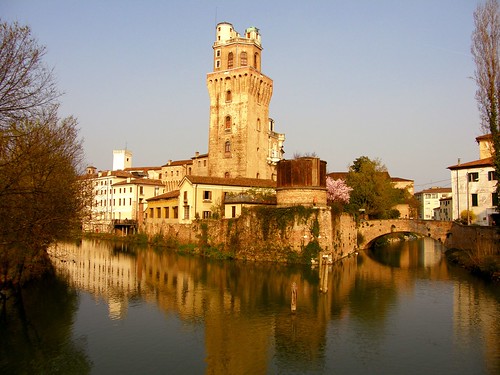 In 2007 I first saw Galieo's Asronomic Observatory at Padua (Padova) University in Italy. It was here in the early 17th century that he observed 4 moons revolving around Jupiter, using a super-powerful telescope that he had invented. The telescope also enabled him to make several other amazing discoveries. Far from impressed, the other professors refused to even look through it, since Galileo felt, by analogy, this confirmed Copernicus' teaching that the earth revolved around the sun, not the other way around as the Catholic church taught. (Ecclesiastes 1:5 says, "The sun riseth, and goeth down, and returneth to his place: and there rising again.") Though he moved to Florence to seek a freer intellectual climate, the "church" soon caught up with him and threatened to place him on trial for heresy. He stayed quiet for years, but when he published his book on astronomy, the Inquisition arrested and imprisoned him, threatening him with torture if he didn't recant his view about the sun. To save his life, he recanted, but was still branded a heretic and placed under house arrest ... for the rest of his life. The Catholic church's brutal repression of science and its use of torture in the Inquisition are two of many historical evidences showing what a wonderful thing it was that genuine Christianity had begun to find its own way in the Reformation of the previous century ... becoming Protestantism. Next year it will be 500 years since that momentous occurrence began in Wittenberg, Germany in October 1517.
In 2007 I first saw Galieo's Asronomic Observatory at Padua (Padova) University in Italy. It was here in the early 17th century that he observed 4 moons revolving around Jupiter, using a super-powerful telescope that he had invented. The telescope also enabled him to make several other amazing discoveries. Far from impressed, the other professors refused to even look through it, since Galileo felt, by analogy, this confirmed Copernicus' teaching that the earth revolved around the sun, not the other way around as the Catholic church taught. (Ecclesiastes 1:5 says, "The sun riseth, and goeth down, and returneth to his place: and there rising again.") Though he moved to Florence to seek a freer intellectual climate, the "church" soon caught up with him and threatened to place him on trial for heresy. He stayed quiet for years, but when he published his book on astronomy, the Inquisition arrested and imprisoned him, threatening him with torture if he didn't recant his view about the sun. To save his life, he recanted, but was still branded a heretic and placed under house arrest ... for the rest of his life. The Catholic church's brutal repression of science and its use of torture in the Inquisition are two of many historical evidences showing what a wonderful thing it was that genuine Christianity had begun to find its own way in the Reformation of the previous century ... becoming Protestantism. Next year it will be 500 years since that momentous occurrence began in Wittenberg, Germany in October 1517.
[Photos by Ken Horn]
